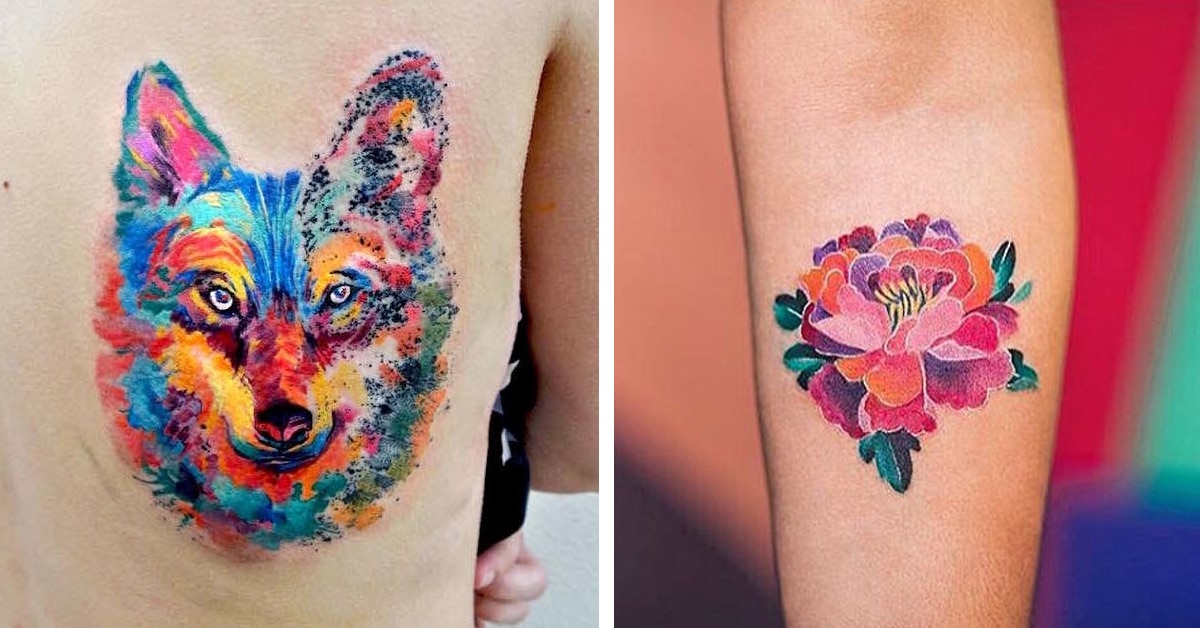Tattoos used to be considered permanent. People thought very hard before getting one as it would be almost impossible to remove. Nowadays though, many people do not give enough consideration as to whether inking themselves for life is a good idea.
Part of the reason is the advent of more and more advanced methods of laser tattoo removal - Many people mistakenly think that tattoos can be simply erased with the wave of a laser wand.

While I am by no means the sole authority on laser tattoo removal in Singapore, I have counselled many patients seeking tattoo removal, removed numerous tattoos and seen enough botched cases to know that laser tattoo removal is NOT perfect.
Tattoo removal technology is not as developed as people think it is. It is far from foolproof salvation where you can just pay a few hundred dollars, go for a couple of laser sessions and have perfect tattoo-free skin instantly.
What if you really really want to remove your tattoo then? What must you be aware of, for your tattoo removal to be successful?
Here are the most important things you need to know.
Is there a magic laser tattoo eraser?

When a tattoo is placed in the skin, it is not just a single layer of ink but a whole multilayered 3D structure of pigment particles. When the laser hits, the top layer of tattoo particles is broken up and superheated gases block subsequent laser penetration. This produces a white ‘frosting’ effect which makes it look like the tattoo is gone (especially in videos). The tattoo is actually still there under the frost! It will reappear in a few hours when the gases become less opaque.

Even after the gases are gone, further laser passes don’t penetrate any further because the top layer of ink is still present as a cloud of shattered particles. We can only target the rest of the pigments after these pieces of broken-down tattoo are gone. Hence, there is a need for an interval between treatments for the immune system to clear the fragments and expose the next layer of tattoo pigment.
With all the progress in technology, is there a 'best' laser that can clear tattoos in just one or two sessions? Unfortunately, at the moment there is no magic laser that can remove a tattoo in 1 session.
How many sessions are required then? No doctor can tell you exactly. This depends a lot on the techniques and equipment used, the amount and depth of ink placed and how good your body is at eliminating the tattoo.
Typically, it ranges from 8 to 20 for nanosecond lasers and 4 to 10 for picosecond lasers. If we add on auxiliary treatments like fractional laser and shockwave, the number of sessions can be reduced further due to faster pigment clearance with lower downtime and scarring risk.
So laser tattoo removal is actually a long protracted process and any doctor who tries to sell you the fantasy of quick easy tattoo removals within a few sessions might be painting an overly optimistic picture.
Laser tattoo removals - all the same?

Many clinics in Singapore offer cheap laser tattoo removal using old-style nanosecond q switched lasers. These clinics already have these machines around mainly to treat pigmentation. Might as well use them for tattoo removal once in a while right? These lasers may be cheap (SGD$50,000 vs SGD$250,000 or more for picosecond lasers) and easily available but they are much lower in power. This results in:
- inefficient tattoo fragmentation - many more sessions required and there may still be a remnant tattoo ghost left
- more collateral damage - more blistering and risk of scarring
So, should you just hunt for the cheapest picosecond laser tattoo removal?

What you may not know is that picosecond lasers are not all the same.
In Singapore, commonly available picosecond lasers have peak power ranging from 0.3GW (Cynosure Picosure) to 0.8GW (Cutera Enlighten) and 0.9GW (Syneron-Candela Picoway), up to 1.8GW (Quanta Discovery Pico Plus).
While the Fotona Starwalker has a peak power of 0.5GW, I don’t consider it a picosecond laser, because the total pulse duration is actually not on the order of picoseconds but rather nanoseconds (1 nanosecond = 1000 picoseconds).
Peak power has a strong influence on the ability of the laser to shatter tattoo particles with minimal collateral damage, so it’s important to pick the highest-powered laser available. Higher powered lasers can also effectively utilize bigger spot sizes leading to faster treatments. Trust me, you want the laser to be over quickly.

The Number 1 Reason for Tattoo Removal Failure

What do you think is the main reason that patients don’t succeed at getting their tattoos removed? Could it be that the wrong laser was used? Did the doctor use the wrong settings? The tattoo ink is somehow resistant to the laser?
These are common reasons and possible. However, in my experience, the top reason why patients are unable to remove their tattoos is actually excessive pain. Put another way, the doctor did not pay enough attention to or did not administer the proper techniques for adequate pain control.
Make no mistake about it, laser tattoo removals are one of the most painful treatments in medical aesthetics. Patients who’ve had tattoos often feel that since they have already been through the pain of the tattooing process, they can easily handle the pain of laser tattoo removal.
More often than not, the reality is that they find laser tattoo removal much more painful than getting a tattoo, to the point of being unbearable.

That is why it is extremely important that your doctor has the knowledge and ability to administer a wide range of techniques to make laser tattoo removal bearable for you. Options range from simple things like cryotherapy, specially compounded high strength topical anaesthesia (numbing cream), local anaesthetic injections and sedation, to more advanced techniques like nerve blocks, or mechanized intradermal delivery of local anaesthetic.
An experienced doctor would make it a priority to discuss pain control during the consultation because it is an important factor which determines the success or failure of the treatment. After all, if the treatment is too painful to go through, even the most miraculous laser would be doomed to failure.
Our Greatest Fear in Laser Tattoo Removal

Patients are often more concerned with how much it will cost to remove the tattoo and how soon it can be removed. Yet, that is actually not our main concern when removing a tattoo. Most tattoos can be removed with sufficient sessions of an appropriately powerful laser.
The most important thing to avoid is actually scarring. The scar tissue blocks laser penetration, making subsequent laser tattoo removal much more difficult. Once scarring develops, it is very difficult to get rid of. Nobody wants to remove a tattoo only to replace it with a scar!
Sure, we can use a cheap q-switched laser, blast it at maximum power and tell you that it will be gone in just a few sessions. What you may not know is that this subjects you to unnecessary risk because of the excessive collateral thermal damage to the surrounding skin.

Of course, we could just use low power but that would just lead to suboptimal tattoo clearance, and you wouldn't be getting your money's worth. How can we then maximize tattoo clearance while minimizing the risk of scarring?
Picosecond lasers are more efficient at breaking up tattoos while better confining the laser energy to the ink particle, minimizing collateral damage. Auxiliary procedures like fractional laser pre-treatment and shockwave post-treatment reduce downtime and side effects, improve the safety profile of picosecond laser treatment and enable more aggressive laser settings. This allows for more tattoo clearance per session.
Colourful Tattoos Cost Much More

Bold colourful tattoos such as watercolour tattoos are trending. Unfortunately, if you have tattoos with bright colours such as green, blue, yellow, pink, red, most clinics in Singapore do not have the ideal laser to remove your tattoo.
In black tattoos, the large contrast with the skin colour means that most of the laser energy goes to breaking up the tattoo. In most tattoo removal lasers, the primary wavelength 1064nm generated is also most suitable for black tattoos. This means we can utilize the maximum power output of the laser for black tattoos.
In order to target other colours, most tattoo removal lasers have to convert the primary 1064nm wavelength to other wavelengths such as 532nm or 694nm. This uses up expensive consumable dye conversion handpieces and reduces the available power. Low available power means that we can only use a tiny spot size. Small spot sizes mean that the doctor takes a lot longer for the same size tattoo and thus is likely to charge higher prices for the additional time, effort and consumables. Tattoo clearance is very slow and inefficient (due to increased laser scattering) with small spot sizes.

If the clinic does not have the right laser with sufficient power in the right wavelength, you could treat your colourful tattoo a thousand times and still not see complete clearance. Realistically, if you have a colourful tattoo that you MUST remove, you should make sure the clinic you're going to is one of the few in Singapore with full power ruby (694nm) lasers.
More Questions?
Misconceptions abound about laser tattoo removal and I hope this article has cleared up some of the myths for you. You may also want to check out a more in-depth article on the latest research-validated tattoo removal techniques.
If you have any further questions, feel free to drop me a message or contact me through my office. I’ll try my best to help!
References
- Lorgeou, A., Perrillat, Y., Gral, N., Lagrange, S., Lacour, J.-P., & Passeron, T. (2017). Comparison of two picosecond lasers to a nanosecond laser for treating tattoos: a prospective randomized study on 49 patients. Journal of the European Academy of Dermatology and Venereology, 32(2), 265–270.
- Ash, C., Dubec, M., Donne, K., & Bashford, T. (2017). Effect of wavelength and beam width on penetration in light-tissue interaction using computational methods. Lasers in Medical Science, 32(8), 1909–1918.
- Weiss, E. T., & Geronemus, R. G. (2011). Combining Fractional Resurfacing and Q-Switched Ruby Laser for Tattoo Removal. Dermatologic Surgery, 37(1), 97–99.
- Au, S., Liolios, A. M., & Goldman, M. P. (2015). Analysis of Incidence of Bulla Formation After Tattoo Treatment Using the Combination of the Picosecond Alexandrite Laser and Fractionated CO2 Ablation. Dermatologic Surgery, 41(2), 242–245.
- Ramya Vangipuram, MD, Selina S. Hamill, MD, and Paul M. Friedman, MD. Accelerated Tattoo Removal With Acoustic Shock Wave Therapy in Conjunction With A Picosecond Laser. Lasers in Surgery and Medicine 9999:1-3 (2018)
- Ibrahim O, Kaminer M. Accelerated tattoo removal facilitated with acoustic wave device: Delivering up to 90% fading in a single office visit. Lasers Surg Med 2017;49:411.
